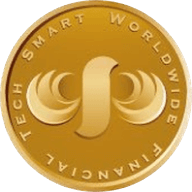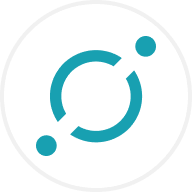Illuvium is a Pokemon-style fantasy role-playing game (RPG) built on Immutable X, a Layer 2 solution for the Ethereum blockchain. ILV is the ticker of the native ERC-20 token of Illuvium's ecosystem.
Players can explore a fantasy landscape in the game while hunting dangerous beasts and participating in battles. The gameplay involves capturing mystical creatures called Illuvials using in-game items called shards. Successfully capturing Illuvials depends on the quality of your shards. Captured Illuvials can then be fused to produce even more powerful beasts.
The governance of this protocol is decentralized and controlled by holders of ILV. Therefore, changes in the protocol proposed by the community members must reach a supermajority to be implemented. Elected members of the Illuvinati Council govern this process.
ILV has several use cases inside the Illuvium ecosystem, including player rewards for unlocking achievements, buying in-game items, and voting. ILV holders can also stake the token to access its liquidity mining program before the game's launch.
How does ILV work?
Illuvium operates on a foundation of four key elements — Illuvials, Illuvary, Game Items, and Regions. Players must explore the vast landscape, conquer formidable alien creatures, and defeat other adversaries to embark on their journey. They begin by personalizing their characters and selecting a companion drone. Each successfully subdued Illuvial can be minted as a unique non-fungible token (NFT).
Beyond battling these creatures, players can delve into the enigmatic secrets of the planet. Embracing the play-to-earn (P2E) model, gamers are rewarded with the project's native token for their achievements in the game.
Drawing inspiration from Pokémon, this blockchain-based GameFi platform aspires to be the first genuine AAA project in the ecosystem. To achieve the AAA gaming experience, Illuvium seamlessly integrates the cutting-edge Unreal Engine 4.26 system. The game's creators have assembled a dedicated team of contributors who continuously strive to enhance performance and gameplay. Offering a captivating fusion of outer space fantasy and Pokémon elements, players become passengers of an intergalactic spaceship that crashes on a mysterious planet, leading to an epic journey of exploration and battles against indigenous monsters.
ILV price and tokenomics
ILV has a maximum supply of 10 million tokens. Five hundred thousand tokens were distributed through a pre-seed sale to core contributors at $1 per token. On Jan. 15, 2021, a further 1.5 million tokens were distributed via the main seed sale at an ILV price of $3. A total of 3 million tokens are allocated to yield-farming pools.
As the project's native token, ILV serves both as a reward mechanism and a governance token. Players will be rewarded with ILV for their active contributions to the network, fostering engagement and participation within the ecosystem. Additionally, community members will play a crucial role as key stakeholders in the Illuvium DAO Council, having a say in important decisions that shape the project's future.
About the founders
Kieran Warwick and Aaron Warwick are the cofounders of Illuvium. Kieran Warwick is said to be involved with one of the world's first OTC cryptocurrency exchanges, while Aaron Warwick owns and directs two major sporting complexes in Australia.
Apart from the cofounders, the protocol has several noteworthy partners, such as IOSG Ventures, Delphi Digital, and LD Capital, and private investors like Stani Kulechov, founder of Aave, Danish Chaudhry, CEO of Bitcoin.com, Sebastien Borget, founder of SandBox and many more.



















Socials